Történetünk
Történetünk

Tanszékünket 1873-ban, az indoeurópai nyelvtörténet kutatására hozták létre. Már első tanára, Mayr Aurél munkásságával megindult a szanszkrit nyelv oktatása, amely Schmidt József alatt teljesedett ki, aki több könyvet és fordítást közölt a klasszikus indiai kultúrával kapcsolatban. Stein Aurél és Baktay Ervin termékeny és közismert munkássága mellett a két világháború között azonban a tanszék betöltetlen maradt.
A második világháború után 1952-ben, Harmatta János és Töttössy Csaba kinevezésével kezdődött újra a munka, 1956-ban pedig a tanszék megbízást kapott az indológia szak oktatására. A hangsúly a kezdeti időszakban elsősorban a szanszkrit filológiai tanulmányokon volt. Töttössy Csaba professzor tanítványai nemzetközileg elismert szakemberei a klasszikus indológia egy-egy területének. Ez az arculat egészült ki 1981 után Négyesi Mária révén a hindí nyelv magas szintű oktatásával, a modern India értő megismertetésével.
Balra: Zangla falu palotája az eldugott ladakhi Zanszkar-völgyben, itt élt s kutatott több éven át Kőrösi Csoma Sándor.
Alább a hazai India-tanulmányok kezdeteiről és a nagy elődök munkásságáról olvashatnak. A jelen indológusai az Aktív India-szakértőink, míg tanszékünk mostani oktatói a Munkatársak és Vendégtanáraink oldalon mutatkoznak be.
Az első magyar, akiről tudható, hogy járt Indiában, a mai Horvátországban található Raszinyáról (Apajkeresztúr) származó Huszti György. Nem tudományos törekvések vitték, 1538-ban Nagy Szulejmán török szultán seregének foglyaként érte el India nyugati partját Díú erődjének ostromakor. Huszti ugyanakkor művelt ember volt, 1542-es hazatérte (tíz évi hányattatás) után Pozsonyban letelepedve írta meg sokáig kiadatlan emlékiratait latinul.
Indiai irodalom már akkoriban megjelent Magyarországon, amikor az indológia még nem volt önálló tudományterület. Az első ilyen művet, a Horologium Turcicumot Rozsnyai Dávid fordította a 17. században, mely a Pancsatantra mesegyűjtemény első magyar változatát tartalmazza. Rozsnyai még nem közvetlenül szanszkritból fordított, hanem egy török nyelvű változatból. Hasonlóképp több más 18. századi magyar fordítás sem szanszkrit eredetiből készült.
Magát a szanszkrit nyelvet a 18. század óta tanulmányozták Magyarországon. 1750 körül a Leidenben tanuló Vályi István néhány indiai diákkal is találkozott. Egy tanulmánya, amelyben kitér a szanszkrit és más indoeurópai nyelvek közötti kapcsolatra, megelőzte más tudósok, mint Cœurdoux vagy William Jones, ismertebb munkáit.
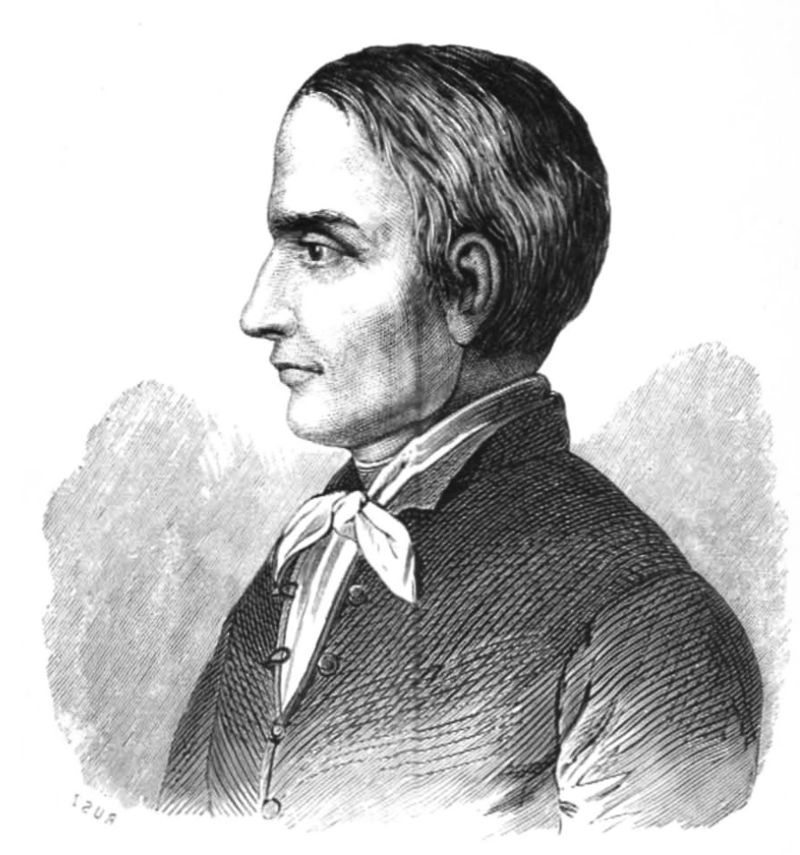 Kőrösi Csoma Sándor (1784-1842) élete és munkássága mai napig mérföldkő a magyar indológia történetében. Eredeti, eltökélt célja a magyarok ázsiai őshazájának meglelése volt. Az indiaiak és tibetiek felé nemzetének barátja és rokonaként közelített. Szegény diákként ért el Indiába és az angol gyarmatosók társaságát többnyire kerülve igyekezett a helyiek életéhez alkalmazkodni. Több mint tíz évet töltött Ladakhban, ahol az indiai történelemmel, irodalommal, filozófiával, vallással és orvostudománnyal kapcsolatos számos alapvető fontosságú szöveget fedezett fel. Ő volt az első kutató, aki tanulmányokat fűzött a Mahāvyutpatti szanszkrit-tibeti szótárhoz. 1834-ben megjelentette a tibeti-angol szótárat, valamint az első tibeti leíró nyelvtant. Dardzsilingben hunyt el, miközben eredeti célkitűzését még nem érte el; ottani sírja ma minden magyar látogató számára zarándokhely.
Kőrösi Csoma Sándor (1784-1842) élete és munkássága mai napig mérföldkő a magyar indológia történetében. Eredeti, eltökélt célja a magyarok ázsiai őshazájának meglelése volt. Az indiaiak és tibetiek felé nemzetének barátja és rokonaként közelített. Szegény diákként ért el Indiába és az angol gyarmatosók társaságát többnyire kerülve igyekezett a helyiek életéhez alkalmazkodni. Több mint tíz évet töltött Ladakhban, ahol az indiai történelemmel, irodalommal, filozófiával, vallással és orvostudománnyal kapcsolatos számos alapvető fontosságú szöveget fedezett fel. Ő volt az első kutató, aki tanulmányokat fűzött a Mahāvyutpatti szanszkrit-tibeti szótárhoz. 1834-ben megjelentette a tibeti-angol szótárat, valamint az első tibeti leíró nyelvtant. Dardzsilingben hunyt el, miközben eredeti célkitűzését még nem érte el; ottani sírja ma minden magyar látogató számára zarándokhely.
Az indológia mindig jelentős szerepet foglalt el az Indoeurópai Nyelvtudományi Tanszék (2017 óta Indológia Tanszék) életében. Tanszékünket az egyetem Bölcsészettudományi Karán 1873-ban hozták létre. Első egyetemi tanára Mayr Aurél (1846-1915) volt, aki 1905-ig tanított itt. Szakterülete az ókori indiai jogtörténet volt, s az e témában (németül) megjelent munkái mai napig tudományos értékkel bírnak.
Fordítások terén Fiók Károly (1857–1915) végzett úttörő munkát, aki középiskolai és főiskolai tanárként dolgozott. Szanszkrit eredetiből fordította le Kálidásza Sakuntalá felismerése (Abhijñāna-śākuntalam) c. színművét (1887), a Mahábhárata eposz két részletét (1885, 1889) és a Hasznos tanítások (Hitópadésa) meséit (1905). Hazánk ünnepelt költőjét, Arany Jánost is megihlette a Sakuntalá első fordítása, aki saját változatot írt a dráma negyedik felvonásához.
A 19. század második felében működött Szentkatolnai Bálint Gábor (1844-1913) poliglott nyelvész, aki nemcsak kalmük, mongol és mandzsu nyelvi gyűjtést végzett az MTA megbízásából, hanem későbbi hosszú külföldi tartózkodása során tamilul is tanult (noha magyar szórokonításai nem állták ki a tudomány történetének próbáit). Ő volt hazánk egyik első eszperantistája is.
Mayr professzor utóda a tanszéken Schmidt József (1868–1933) volt. Összehasonlító nyelvtudományi előadásai híresek voltak felkészültségéről és saját kutatásainak élénk bemutatásáról. A szanszkrit tanulmányok mellett további tudományterületei az iranisztika és az indoeurópai összehasonlító nyelvészet voltak. Népszerű munkái, melyek az 1920-as években láttak napvilágot, közül néhány: Kálidásza, Ázsia világossága: Buddha élete, tana és egyháza, Az ó-ind epika, A szanszkrit irodalom története, Az ind filozófia. Több műfordítást készített, mint Kálidásza Király és a bajadér (Mālavikā-Agnimitra) c., illetve Súdraka Az agyagkocsika (Mṛcchakaṭikā) c. színdarabja, valamint a Pancsatanra mesegyűjtemény. Sajnos később sok kiadatlan kézirata tűz miatt elpusztult.
A 20. század első évtizedeiben sok további fordítás jelent meg más szerzők tollából, köztük a Bhagavad-gítá több változata.
1913-ban Tagore (Ravíndranáth v. Robindronáth Thákur) néhány versét a Nyugat adta közre Babits Mihály fordításában. Tagore 1926-os magyarországi tartózkodásáig már több mint húsz munkája látott magyarul napvilágot. Első látogatása részben egészségügyi célú volt a balatonfüredi szívkórházban, sikeres is, ezért egy fát ültetett ott emlékül, amely ma is áll a sétányon, együtt azokkal, amelyeket későbbi indiai delegációk ültettek el mellé. Hazatérte után is élénk kapcsolatot ápolt magyar tudósokkal és művészekkel. Sántinikétanban, az általa alapított egyetemen töltöttek hosszabb időt a Brunnerek, Sass-Brunner Erzsébet és szintén festőművész lánya, Brunner Erzsébet, valamint Germanus Gyula arabista-turkológus és felesége, Hajnóczy Róza. Szintén ő hívta meg Fábri Károlyt, aki művészettörténészként, múzeológusként és a klasszikus indiai táncművészet támogatójaként ért el karriert Indiában, ahol családot is alapított.
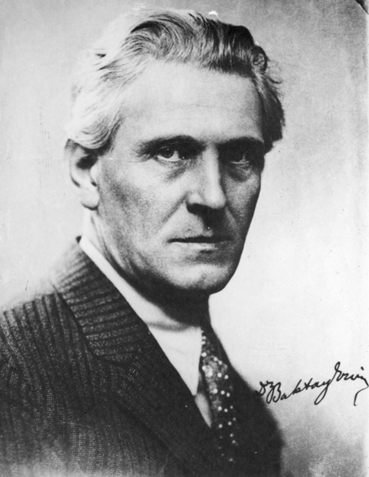
Baktay Ervin (1890–1963) alapvető szerepet játszott az indiai kultúra hazai megismertetésében, népszerűvé tételében. Sok könyve jelent meg ebben a témakörben már az 1920-as évektől, mindenekelőtt a Rámájana és Mahábhárata eposzok feldolgozásai, és az indiai filozófiával, jógával és vallással kapcsolatos írásai. 1946 után a Hopp Ferenc optikus vállalkozó, utazó és műgyűjtő nevét viselő Hopp Ferenc Ázsiai Művészeti Múzeumban dolgozott, miközben egyetemünkön is tartott előadásokat az indiai művészetről. India művészete c. 1958-ban megjelent munkája klasszikus.
Magyarország és India kapcsolatában további fontos összekötő kapocs Amrita Sher-Gil (1913–1941), az India budapesti nagykövetsége mellett működő Amrita Sher-GIl Indiai Kulturális Központ névadója. E festőtehetség édesanyja, Gottesmann Mária magyar hölgy, édesapja pedig egy indiai előkelő, Umráó Szingh Sér-Gil volt. A 20. század művészetének meghatározó alakjaként új korszakot nyitott az indiai festészetben. Édesanyja testvére, az imént említett Baktay Ervin eredetileg szintén festőnek tanult.
1920-tól a tanszéki oktatómunka politikai okok miatt nem folytatódott 1948-ig. Ugyanakkor ebben az időszakban munkálkodott a határon túl egy másik kimagasló magyar indológus, Sir Stein Aurél (1862–1943). Legfontosabb filológiai érdeme a kasmíri Kalhana Rājataraṃginī c. történeti elbeszélő költeményének kritikai kiadása, legnagyobb sikere viszont három közép-ázsiai expedíció kivitelezése 1900 és 1916 között. Ezek révén igen sok elfeledett ókori kézirat került újra napvilágra (elsősorban a nyugat-kínai Tun Huangból), amelyek még napjainkban is tudományos munka tárgyát jelentik. Eredményeiért lovagi címet kapott. A delhi Nemzeti Múzeum külön tárlatban mutatja be az általa gyűjtött anyagot.
Az India-tanulmányok 1948-ban kezdődhettek el újra az egyetemen, egy évig Szemerényi Oszvald nyelvész vezetése mellett. Az ő tanítványa volt Vekerdi József, a későbbiekben sok szanszkrit mű ismert és elismert fordítója. Ezután, szintén rövid ideig Gaál László, aki utóbb a Debreceni Egyetem klasszika-filológia professzora lett, tanított szanszkritot a tanszéken. Göttingenben tanult, ahol a híres iranista, Prof. Friedrich Carl Andreas és a neves szanszkritológus, Prof. Richard Fick tanítványa volt.
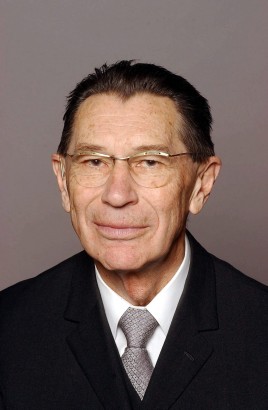 Ahogy említettük, Vekerdi József (1927–2015), az egyetem korábbi indológushallgatója nagyszámú klasszikus szanszkrit irodalmi mű, köztük a Mesefolyamok óceánja (Kathā-sarit-sāgara) és A hulladémon huszonöt meséje (Vetāla-pañcaviṃśatikā) mesegyűjtemény, Rigvéda-himnuszok és Kálidásza további műveinek elismert fordítójává vált. Több költővel működött együtt, mint Tellér Gyula és Lakatos István. Weöres Sándorral közös munkái különösen sikeresek: Dzsajadéva Gíta-góvinda pásztorénekének átültetését indiai költők is megéljenezték. Vekerdi kiváló tudós volt, a cigány nyelv iránti mély érdeklődéssel, amelynek eredménye A magyarországi cigány nyelvjárások szótára.
Ahogy említettük, Vekerdi József (1927–2015), az egyetem korábbi indológushallgatója nagyszámú klasszikus szanszkrit irodalmi mű, köztük a Mesefolyamok óceánja (Kathā-sarit-sāgara) és A hulladémon huszonöt meséje (Vetāla-pañcaviṃśatikā) mesegyűjtemény, Rigvéda-himnuszok és Kálidásza további műveinek elismert fordítójává vált. Több költővel működött együtt, mint Tellér Gyula és Lakatos István. Weöres Sándorral közös munkái különösen sikeresek: Dzsajadéva Gíta-góvinda pásztorénekének átültetését indiai költők is megéljenezték. Vekerdi kiváló tudós volt, a cigány nyelv iránti mély érdeklődéssel, amelynek eredménye A magyarországi cigány nyelvjárások szótára.
Az Indoeurópai Nyelvtudományi Tanszék hivatalosan 1952-ben jött újra létre, amikor Harmatta Jánost nevezték ki vezetőjének. Ebben az időszakban a tanszék fő tevékenysége a klasszikus nyelvek nyelvészetének oktatása volt, a szanszkritot választható tantárgyként tanították.
Egyetemi szakként az indológiát 1956-ban indította el a tanszék, a Magyarország és a független India közti kulturális kapcsolat sokrétűbbé válásának korszakában. Ez volt az első és eddig meg nem ismételt alkalom, hogy ilyen szak induljon hazánkban. A jelenleg Magyarországon működő indológusok, India-szakértők csaknem mind tanszékünk növendékei.
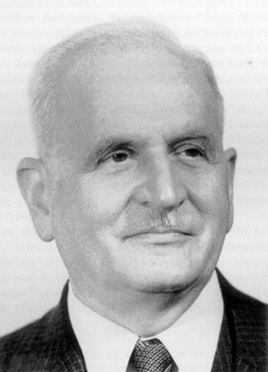 Harmatta János professzor (1917–2004), a Magyar Tudományos Akadémia tagja, 1956-tól egészen 1987-es hivatalos nyugalmazásáig vezette a tanszéket, és azt követően is folytatta a tanítást mint professor emeritus. Szakterületei voltak az iranisztika (ó- és középiráni nyelvek története, óperzsa, pártus, középperzsa, baktriai és szogd feliratok), klasszika-filológia (görög történészek és földrajzi írók), indológia (prákrit nyelvek, beleértve a gándhárí prákritot, az indiai nyelvek története, bráhmí és kharósthí írásos feliratok) és az indoeurópai nyelvészet. Szanszkrit műveket is fordított, köztük Rigvéda-himnuszokat.
Harmatta János professzor (1917–2004), a Magyar Tudományos Akadémia tagja, 1956-tól egészen 1987-es hivatalos nyugalmazásáig vezette a tanszéket, és azt követően is folytatta a tanítást mint professor emeritus. Szakterületei voltak az iranisztika (ó- és középiráni nyelvek története, óperzsa, pártus, középperzsa, baktriai és szogd feliratok), klasszika-filológia (görög történészek és földrajzi írók), indológia (prákrit nyelvek, beleértve a gándhárí prákritot, az indiai nyelvek története, bráhmí és kharósthí írásos feliratok) és az indoeurópai nyelvészet. Szanszkrit műveket is fordított, köztük Rigvéda-himnuszokat.
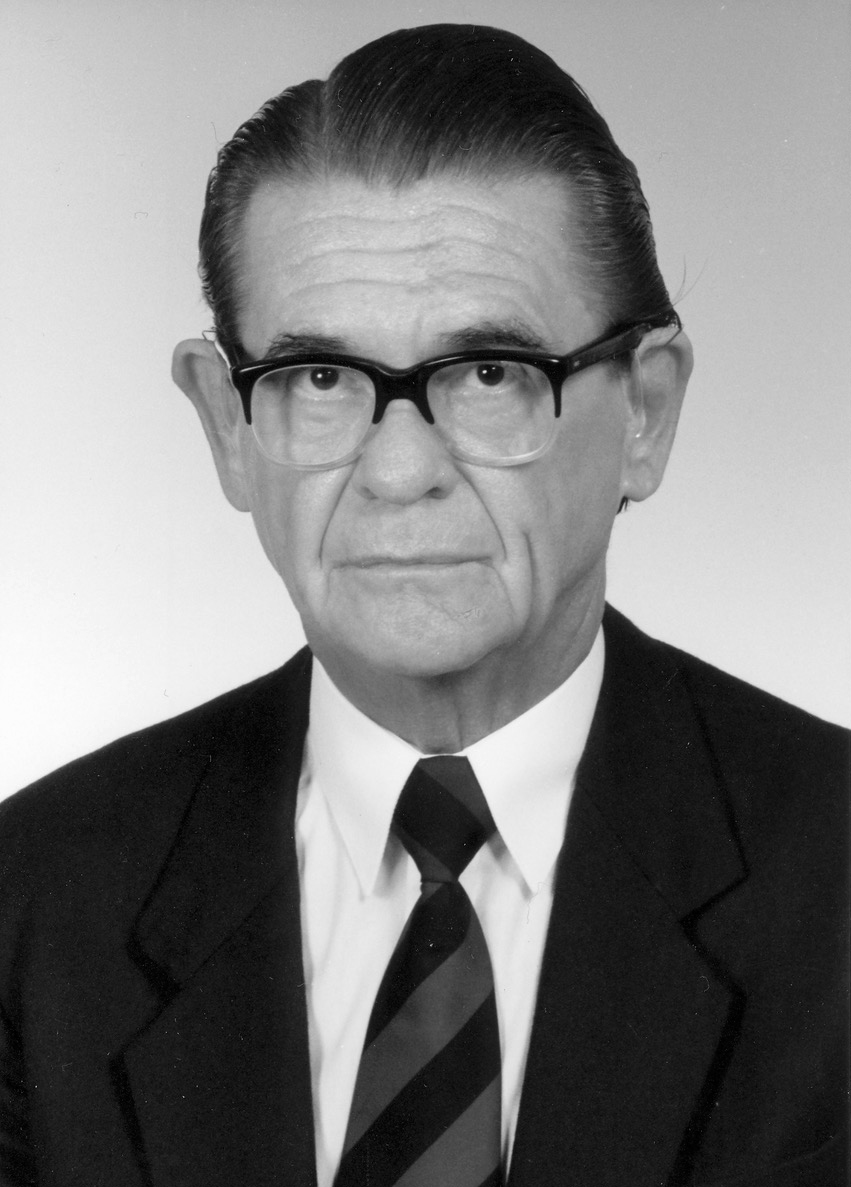 Töttössy Csaba professzor (1931–2011) a tanszéken 1953-tól tanított, 1987 és 2001 között pedig vezetője volt; 2002-től nyugalmazottként folytatta az oktatást. Kandidátusi fokozatát (PhD) 1963-ban, a Papagáj hetven meséje (Śuka-saptati) c. szanszkrit klasszikusról szóló értekezésével szerezte meg. Habilitációs előadását a latin, görög és szanszkrit nyelvek összehasonlító mondattanának témájában tartotta meg 1995 márciusában. Töttössy professzort kérte fel az Oktatási Minisztérium 1956 elején, hogy szélesítse ki a tanszék tevékenységét az indológia teljes szakként való oktatására, ő volt aki eredetileg kialakította a képzési tervet. Nyelvtan, szövegolvasás és -elemzés, szanszkrit nyelv- és irodalomtörténet órákat tartott, valamint indoeurópai nyelvészetet és latin történeti nyelvtant oktatott. Egyik fő érdeklődési területe a görög és latin összevetése volt más indoeurópai nyelvekkel. A Śukasaptatiról írt tanulmányai új meglátásokkal bővítették a szanszkrit stúdiumokat, érintve a szerzőség kérdéskörét, a történet tematikus vázának magyarázatát, illetve a nyugati műfaji párhuzamok bemutatását. Először 1962-ben jelent meg a mesegyűjtemény díszesebb szövegváltozatának magyar fordítása. Fordított részleteket a Manu törvénykönyvéből (Mānava-dharmaśāstra) és Kautílja államról és gazdaságról írt értekezéséből, az Artha-śāstrából.
Töttössy Csaba professzor (1931–2011) a tanszéken 1953-tól tanított, 1987 és 2001 között pedig vezetője volt; 2002-től nyugalmazottként folytatta az oktatást. Kandidátusi fokozatát (PhD) 1963-ban, a Papagáj hetven meséje (Śuka-saptati) c. szanszkrit klasszikusról szóló értekezésével szerezte meg. Habilitációs előadását a latin, görög és szanszkrit nyelvek összehasonlító mondattanának témájában tartotta meg 1995 márciusában. Töttössy professzort kérte fel az Oktatási Minisztérium 1956 elején, hogy szélesítse ki a tanszék tevékenységét az indológia teljes szakként való oktatására, ő volt aki eredetileg kialakította a képzési tervet. Nyelvtan, szövegolvasás és -elemzés, szanszkrit nyelv- és irodalomtörténet órákat tartott, valamint indoeurópai nyelvészetet és latin történeti nyelvtant oktatott. Egyik fő érdeklődési területe a görög és latin összevetése volt más indoeurópai nyelvekkel. A Śukasaptatiról írt tanulmányai új meglátásokkal bővítették a szanszkrit stúdiumokat, érintve a szerzőség kérdéskörét, a történet tematikus vázának magyarázatát, illetve a nyugati műfaji párhuzamok bemutatását. Először 1962-ben jelent meg a mesegyűjtemény díszesebb szövegváltozatának magyar fordítása. Fordított részleteket a Manu törvénykönyvéből (Mānava-dharmaśāstra) és Kautílja államról és gazdaságról írt értekezéséből, az Artha-śāstrából.
Az 1960-as évek során néhány évig tagja volt a tanszéknek Hutterer Miklós, a germán nyelvek ismert szakértője.
A kortárs Indiához, különösen a hindí nyelvhez és irodalomhoz kapcsolódó tanulmányok csupán néhány évtizedesek. Ezzel együtt a hindí már az indológusképzés 1956-os kialakulásakor a tanmenet szerves része volt.
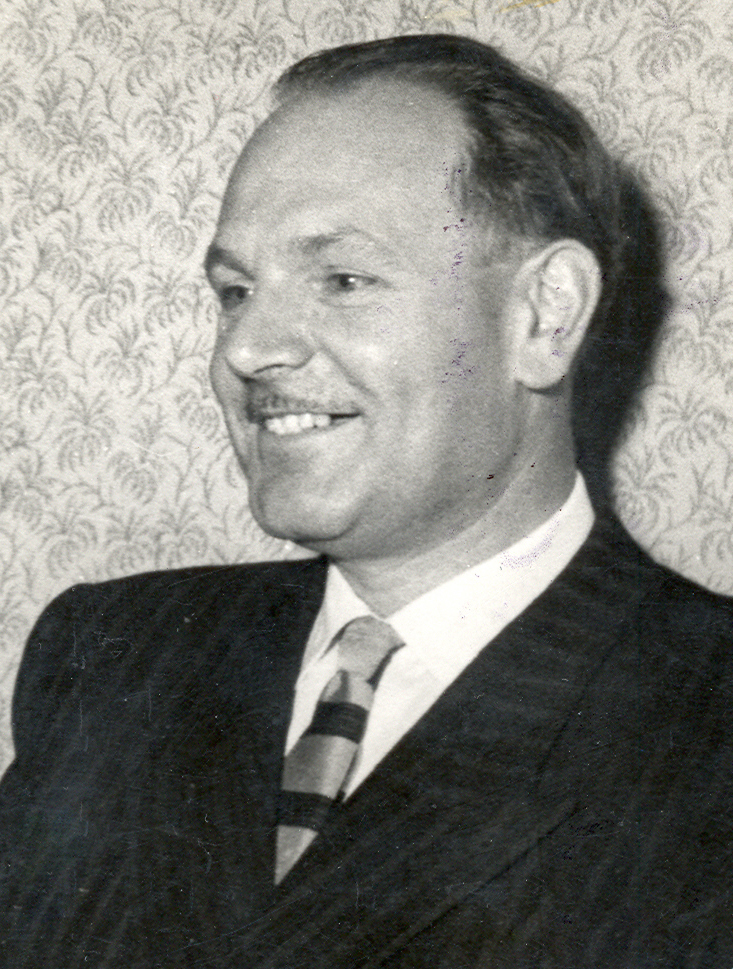 Az első oktató ezen a területen Debreczeni Árpád volt. Kandidátusi (PhD) disszertációja a hangsúly és intonáció kérdésével foglalkozott a hindíben. Kezdők számára írt hindí nyelvkönyve volt az első hindí tankönyv hazánkban. Érdeklődési körébe tartozott a hindí és a magyar igerendszerének összevetése és a nyelvi regiszterek működése a hindíben. Több kortárs hindí irodalmi művet fordított és számos tanulmányt tett közzé. Hindí-magyar nagyszótára sajnos nyomtatásban nem jelent meg, de az első, 1973-ban Kós Péter volt indiai nagykövet által összeállított magyar-hindí szótárat ő lektorálta.
Az első oktató ezen a területen Debreczeni Árpád volt. Kandidátusi (PhD) disszertációja a hangsúly és intonáció kérdésével foglalkozott a hindíben. Kezdők számára írt hindí nyelvkönyve volt az első hindí tankönyv hazánkban. Érdeklődési körébe tartozott a hindí és a magyar igerendszerének összevetése és a nyelvi regiszterek működése a hindíben. Több kortárs hindí irodalmi művet fordított és számos tanulmányt tett közzé. Hindí-magyar nagyszótára sajnos nyomtatásban nem jelent meg, de az első, 1973-ban Kós Péter volt indiai nagykövet által összeállított magyar-hindí szótárat ő lektorálta.
A tanszék első végzett hallgatója, Bethlenfalvy Géza (1936–2022) az 1970-as években több évig vezette Delhiben a népszerű Magyar Tájékozttási és Kulturális Központot. Fő területe a tibetológia volt, főképp a szanszkrit és tibeti irodalom hatása egymásra. Korábban a Delhi Egyetmen éveken át tartott magyar nyelv és irodalom előadásokat. Később egyetemünk tibetológia szakán oktatott. Maradandó munkát végzett a hazánk és India közötti kulturális kapcsolatok elmélyítésvel.
Puskás Ildikó professzor (1942–2009), indológus és történész, az ELTE Ókortörténeti Tanszékének vezetőjeként is dolgozott, illetve tanított a Debreceni Egyetem megfelelő tanszékén is. Kutatási területe a pre-árja India és a hinduizmus története volt. Munkái közt szerepel a Magyaroszágon India tárgyában 1991-ig megjelent művek angol-magyar kétnyelvű bibliográfiája.
Fehér Judit (1953–2019) indológia és tibeti szakos diplomájának (1983) megszerzését követően két évig a Hopp Ferenc Ázsiai Művészeti Múzeum munkatársa volt. 1994-ben szerzett doktori fokozatot a madhjamaka buddhista filozófia témakörében. Tudományos munkatársa volt a Magyar Tudományos Akadémiának, és a Tan Kapuja Buddhista Főiskolán is tanított.
Fentebb a hazai India-tanulmányok kezdeteiről és a nagy elődök munkásságáról olvashattak. A jelen indológusai az Aktív India-szakértőink, míg tanszékünk mostani oktatói a Munkatársak és Vendégtanáraink oldalon mutatkoznak be.

